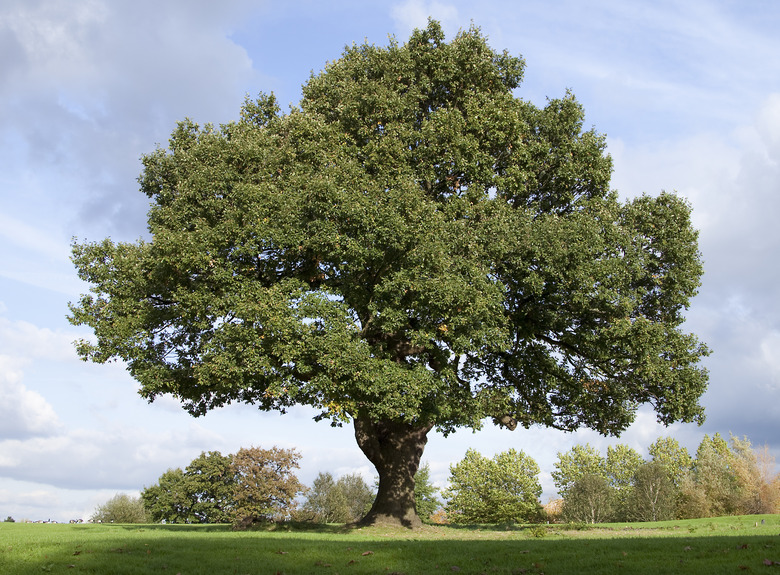Oak Tree Diseases And How To Treat Them
We may receive a commission on purchases made from links.
The majority of people can agree that oak trees (Quercus spp.) are beautiful. But if they are left untreated, oak tree diseases will kill the tree. Many homeowners don't realize that their actions can contribute to a tree's death, so it is important not to make any unnecessary changes to the canopy of an oak tree. Symptoms of oak tree diseases include discolored or spotted foliage, dead or dying foliage or branches, thinning canopy, shelf mushrooms or wet patches on the trunk. Although infections can lead to the death of a tree, many are treatable.
Phytophthora Root Rot
Phytophthora Root Rot
Phytophthora root rot is a disease that is soil-borne. This disease causes rot at the roots of the tree, and if the soil is warm or produces a lot of moisture, the virus can reproduce. Phytophthora can form if you water the oak tree beneath the canopy, especially on or near the trunk. Native oak trees thrive off of drought-like conditions.
Another way that the tree can become diseased is if there is a buildup of soil or mulching material near the trunk. The disease thrives in this type of environment and is harmful to the oak tree's health.
Oak Tree Blister
Oak Tree Blister
Oak tree blister can be detected on the top and bottom of the tree's leaves. The surface of the leaves will look blistered, hence the name. On the other side of the leaf, it will look gray colored, but as the disease gets worse, it will turn brown. When the tree turns brown, it will curl up and drop prematurely. The tree won't die, but it will not be as full during the season as it should.
Armillaria Root Rot
Armillaria Root Rot
The most common type of disease is Armillaria root rot, also known as oak root fungus. Oak root fungus is found in the root and tree trunks. If you see clusters of mushrooms growing at the base of an oak tree, this is a warning sign of oak root fungus.
The health of the tree becomes compromised due to overwatering the tree, nutrient deficiency or excess soil build up. Interestingly enough, Armillaria root rot can last in a tree for over 20 to 50 years if left untreated.
Bacterial Wetwood or Slime Flux
Bacterial Wetwood or Slime Flux
Bacterial wetwood is the least damaging oak tree disease. Wetwood, also known as slime flux, is when an anaerobic bacteria infects the wood. The infected wood's composition causes disrupted membranes, high pH and low amounts of free oxygen due to small spaces in the tree being filled with water.
Wetwood infects wounds, branch stubs, and root stubs, as well as alters the wood by causing high pH, high moisture and low oxygen due to decay-causing fungi. You'll notice the effects of wetwood because the tree starts to form a bunch of cracks called spider heart. It is a common feature, though, in many trees in the forest, specifically white oaks.
Oak Tree Care and Service
Oak Tree Care and Service
Correct watering, pruning and using fertilizer based on soil-test recommendations can help your oak trees to live longer, remain healthy, adapt to environmental stressors and insects, as well as decrease the spread of diseases. It is essential to know what type of oak tree you have before trying to care for it.
Stopping infection starts by properly caring for your oak trees. If your oak trees become subject to disease, you may need to consult an arborist who will know how to treat the issue properly.
